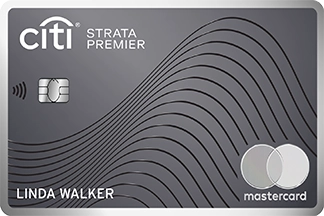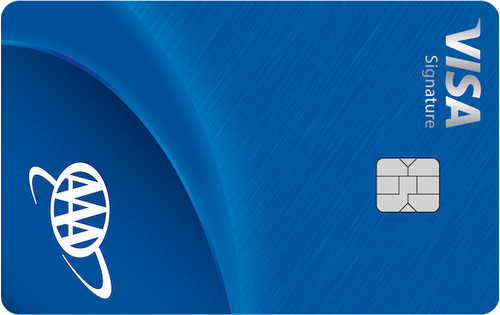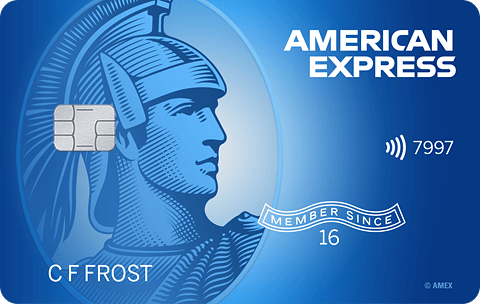- myFICO® Forums
- FICO Scoring and Other Credit Topics
- Understanding FICO® Scoring
- Utilization has no memory... But should it?
- Subscribe to RSS Feed
- Mark Topic as New
- Mark Topic as Read
- Float this Topic for Current User
- Bookmark
- Subscribe
- Mute
- Printer Friendly Page
Utilization has no memory... But should it?
Is your credit card giving you the perks you want?
Browse credit cards from a variety of issuers to see if there's a better card for you.
- Mark as New
- Bookmark
- Subscribe
- Mute
- Subscribe to RSS Feed
- Permalink
- Report Inappropriate Content
Re: Utilization has no memory... But should it?
Unfortunately the current system does not identify PIF transactors. Those that allow charges to post on credit cards and then PIF after statements cut but before due date are certainly no more of a risk than those who pay PIF charges before statements cut. However, the former can get penalized due to utilization appearing high although there is no carryover.This issue could be resolved if sufficient info was submitted to the CRAs to identify transactors vs revolvers that actually carry balances.
I do see value in on time payment history but not in utilization history. It's the current state of affairs that matters regarding utilization (leveraging of credit directly correlates to risk). If someone puts a very large purchase on a CC that drives up utilization to red flag levels, that act represents potential risk. If the charge is subsequently PIF before statement close then no impact on score and no elevated risk.
The flaw is charges that are PIF after statement cuts but before due date. Score could take a big hit in this case. Fortunately impact is only point in time => pay down indicates availability of funds => score rebounds. Lack of pay down => risk => score remains lower. Fico has this one right (other than lack of transactor behavior which means unjustified score drop to those who allow charges to report on statements and then PIF).
If I were a lender your current level of credit utilization and on time payment history are things I'd look at. Utilization history really is not a good predictor - IMO.
Fico 8: .......EQ 850 TU 850 EX 850
Fico 4 .....:. EQ 809 TU 823 EX 830 EX Fico 98: 842
Fico 8 BC:. EQ 892 TU 900 EX 900
Fico 8 AU:. EQ 887 TU 897 EX 899
Fico 4 BC:. EQ 826 TU 858, EX Fico 98 BC: 870
Fico 4 AU:. EQ 831 TU 872, EX Fico 98 AU: 861
VS 3.0:...... EQ 835 TU 835 EX 835
CBIS: ........EQ LN Auto 940 EQ LN Home 870 TU Auto 902 TU Home 950
- Mark as New
- Bookmark
- Subscribe
- Mute
- Subscribe to RSS Feed
- Permalink
- Report Inappropriate Content
Re: Utilization has no memory... But should it?
@iv wrote:
@Anonymous wrote:
I just struggle with believing that someone that carries zero balances or minimal utilization for months or years that spikes their utilization once should be viewed as being equally as risky [with respect to utilization scoring] than someone that's had extremely high or near maxed out utilization over the course of the same period of time. Conversely, someone that's had extremely high utilization for years that suddenly pays it all off being able to achieve the same score immediately [again with respect to only utilization here] as someone that's proven for years that they can keep their utilization low or at 0 just doesn't seem to make perfect sense when scores are supposed to accurately predict risk.
Can't say I'd agree on that... sudden PIF->Carrying is higher-risk than existing long-term carrying!
Yeah, someone who has had high utilization for years isn't the best credit risk... but years of high util (with no missed payments) is stable. (And making lenders plenty of interest income.) And when they pay it off or down? That's just a straight improvement.
But someone who has never carried a balance before who suddenly has a large increase in util? Yikes. Yes, could be a large one-time purchase that will be PIF, or could be taking advantage of a 0% offer... (and with most folks around here, that's exactly what it would be). But - it could also be a bustout, or just a sign of sudden financial distress. Either way, it's not stable. And unstable == risk.
Really, someone who was able to PIF for years suddenly carrying balances is a big red flag for the average consumer account...
You know what I'd personally consider a good scoring metric? Amount of interest paid in the past two years, as a percentage of average balances. It's not reported by lenders, and it won't be, nor would FICO ever include it in scoring (given that non-delinquent accounts that pay interest are very profitable). But I think that would be a much better measure of financial responsibility... but not a better risk/profit measurement.
Precisely this: lenders of all sorts want predictability, not necessariliy the "best" borrower (however we define that).
My FICO won't take a significant hit over the next 1-2 years, but someone would have to be blind to miss the fact that my financial situation isn't the same as it has been by simply looking at my credit report: my pattern of no debt is changing markedly.
Whether it'll trigger questions or AA hard to say and I'm confident I can deal with that if it comes up; however, when a PIF always borrower suddenly isn't, banks will notice. Actually BOFA denied me my full limit at graduation specifically because I floated a balance for a month trying to show utilization. Lesson learned on that one heh, slightly different scenario but same base principle and any moderately sophisticated AR algorithm written in the last 15 years will notice me this time running up a balance on my HELOC. Actually I guess that is an argument to pickup a student loan or two anyway: see, tuition payments... simple explanation and simple is good when dealing with banks.





















- Mark as New
- Bookmark
- Subscribe
- Mute
- Subscribe to RSS Feed
- Permalink
- Report Inappropriate Content
Re: Utilization has no memory... But should it?
If someone never prepays charges before statements cuts but always PIFs statement balances before due dates but then stops PIF and starts carrying balances would a potential new lender pick up on the change in behavior?
Obvoiusly existing creditors will know the difference for their accounts but, many don't report payment $$$ to CRAs - just balances and "ok" for payment.
Fico 8: .......EQ 850 TU 850 EX 850
Fico 4 .....:. EQ 809 TU 823 EX 830 EX Fico 98: 842
Fico 8 BC:. EQ 892 TU 900 EX 900
Fico 8 AU:. EQ 887 TU 897 EX 899
Fico 4 BC:. EQ 826 TU 858, EX Fico 98 BC: 870
Fico 4 AU:. EQ 831 TU 872, EX Fico 98 AU: 861
VS 3.0:...... EQ 835 TU 835 EX 835
CBIS: ........EQ LN Auto 940 EQ LN Home 870 TU Auto 902 TU Home 950
- Mark as New
- Bookmark
- Subscribe
- Mute
- Subscribe to RSS Feed
- Permalink
- Report Inappropriate Content
Re: Utilization has no memory... But should it?
@Anonymous wrote:Hi BBS. I think you are asking a great question. What I was trying to say in response is that future scoring models will almost certainly analyze the "amounts owed" on credit cards in a far richer, sophisticated and reliable fashion than the current comparatively clumsy technique of looking only at your profile as a single snapshot in time (the current instant) with whatever your balances happen to be.
You are right to suspect that analyzing amounts owed over a long time is more reliable -- particularly if it enables the scoring algorithm to detect a tendency to run up balances and then pay only small portions of them. This is critical -- what FICO wants is to be able to compare not only "utilizations" over time but also in conjunction with that payment patterns over time.
And the reason they have had to rely on the relatively clumsy method of analyzing only at any instant is because for decades the CRA data did not permit you to do anything more. The data of what you owed each month (and how much you paid each month) was simply not available. (These data are called trended data.)
That's changed in the last few years. So we'll be seeing a lot more of scoring systems using trended data analysis of credit cards. Already Fannie Mae has built this in to their Destop Underwriter software, which if I read the news stories correctly has already been switched on -- so anyone who thinks they might be getting a mortgage (even as soon as late this year) should be looking at their profile and trying as much as they can to adopt Transactor-like behavior as opposed to that of a Revolver.
Very good info - good to know that some changes are coming. I also didn't know about Transactor vs Revolver so thanks for that!
- Mark as New
- Bookmark
- Subscribe
- Mute
- Subscribe to RSS Feed
- Permalink
- Report Inappropriate Content
Re: Utilization has no memory... But should it?
@iv wrote:
@Anonymous wrote:
I just struggle with believing that someone that carries zero balances or minimal utilization for months or years that spikes their utilization once should be viewed as being equally as risky [with respect to utilization scoring] than someone that's had extremely high or near maxed out utilization over the course of the same period of time. Conversely, someone that's had extremely high utilization for years that suddenly pays it all off being able to achieve the same score immediately [again with respect to only utilization here] as someone that's proven for years that they can keep their utilization low or at 0 just doesn't seem to make perfect sense when scores are supposed to accurately predict risk.
Can't say I'd agree on that... sudden PIF->Carrying is higher-risk than existing long-term carrying!
Yeah, someone who has had high utilization for years isn't the best credit risk... but years of high util (with no missed payments) is stable. (And making lenders plenty of interest income.) And when they pay it off or down? That's just a straight improvement.
But someone who has never carried a balance before who suddenly has a large increase in util? Yikes. Yes, could be a large one-time purchase that will be PIF, or could be taking advantage of a 0% offer... (and with most folks around here, that's exactly what it would be). But - it could also be a bustout, or just a sign of sudden financial distress. Either way, it's not stable. And unstable == risk.
Really, someone who was able to PIF for years suddenly carrying balances is a big red flag for the average consumer account...
You know what I'd personally consider a good scoring metric? Amount of interest paid in the past two years, as a percentage of average balances. It's not reported by lenders, and it won't be, nor would FICO ever include it in scoring (given that non-delinquent accounts that pay interest are very profitable). But I think that would be a much better measure of financial responsibility... but not a better risk/profit measurement.
Amount of interest paid would definitely be an interesting scoring metric to consider, good call on that!
Someone that's had high utilization for years but hasn't missed payments may be "stable" but by definition they are a greater risk because they possess greater debt. If a guy loses his source of income that's been carrying (and is carrying) 80% utilization he's going to be in a much tougher place than the guy that loses his source of income that's been reporting single digit utilization.
I agree that someone that has low utilization for an extended period of time, perhaps years that suddenly makes a single large purchase is certainly introducing new risk into the equation. However, the fact that they've carried low utilization for such a long time should be able to ease some of the risk and subsequent score impact IMO over someone that's been carrying high risk all along. That's why I suggested taking a period of time, say 3 months, and using utilization over that period. If it went off of a 3 month average, for example purposes here, it would allow a person that made a very large purchase or that incurred a major expense one month a period of a couple of months to get it paid back down before taking a crushing blow to their score. If it was based on a 3 month average, the first month would be 1/3 terrible average with 2/3 excellent, then the next month 2/3 terrible average with 1/3 excellent then finally after the 3rd month the entire blow would be taken had it not been paid back down. But this would also work both ways... even if they did pay it back down to 0 after a cycle that one month of a huge utilization spike would still be averaged in for the next 2 cycles which would mean their scores would recover slightly slower and rightfully slow as they did appear to be more of a risk just a month or two prior by spiking that utilization.
- Mark as New
- Bookmark
- Subscribe
- Mute
- Subscribe to RSS Feed
- Permalink
- Report Inappropriate Content
Re: Utilization has no memory... But should it?
@Thomas_Thumb wrote:
@sarge12 wrote:I do not care which method they use....I always PIF every single card, every single month. I am aware though that some people run a balance, not because they can not pay, especially near the last 1/4 of the year. Many have retirement accounts and such that they may not wish to withdraw until the new year to prevent the tax being due this year. As long as the CRA's let everyone know that historical utilization data was going to affect the score, everyone would know in time to adjust their habits accordingly. The way I do it, it would not matter either way. My utilization is actually under 5%...100% of the time. With about 150,000 dollars of credit limits, 5% would be 7500 dollars. I would never allow this much debt on credit cards. The other factor to consider is this. If I only got credit limits because I thought I may need the credit would owing 5000 dollars if I only had 7000 dollars credit limit, make the 5000 dollars any easier to pay off...no!!!! The amount of debt you can repay largely depends on income to pay that debt, and your low utilization does not affect your ability to pay that debt at all. We get CLI's normally not to run up the debt we owe, but solely to make it easier to maintain a low utilization...it's their game, we just play it by the rules they set forth. I could look at someones revolving debt load plotted on a graph for a 1 year period and tell you exactly who was likely to get in credit trouble. It would be the person who's revolving debt load was going up every month. Why?...because they are spending more than they are making every month. If you really want to stay immune to the effects of AA, CLD's and never really have to worry about utilazation, do as I do, treat your credit cards as if they were charge cards.
Yes and No.
A key element in addition to PIF is aggregate credit limit relative to natural monthly spend. Assuming a typical $5000 monthly spend, a person relatively new to credit with $100k yearly income but only $20k aggregate CL would be at 25% utilization. That is well above optimum. To avoid this many play the pre-pay before statement closes game.
I advocate letting all charges post on statements and then paying statement balances 3 to 5 days before due date. That is the only strategy I have ever used. It's simple and maximizes float time on money (other than carrying a balance on a card during a 0% promo period) However, this PIF approach does require having a sufficient total credit limit - total CL of at least 15x typical monthly spend for best results. [for reference my Ag CL is about 40x average monthly spend and staying below my benchmark of 6% Ag UT is not difficult].
A reasonable average monthly spend on credit cards relative to income - depends on a lot of factors. Nonetheless, I'd suggest not exceeding 30% for average monthly CC spend relative to average monthly income as a loose guideline.
T_T, is there any evidence for this "natural monthly spend" theory, or is it a gut feeling?































Total revolving limits 568220 (504020 reporting) FICO 8: EQ 689 TU 691 EX 682
- Mark as New
- Bookmark
- Subscribe
- Mute
- Subscribe to RSS Feed
- Permalink
- Report Inappropriate Content
Re: Utilization has no memory... But should it?
SJ, It's strictly a math thing,
You establish an aggregate credit limit based on some utilization you want to stay below relative to (average spend + natural excursions). If you want to let charges report on statements and ensure maintain aggregate utilization below a given %, then aggregate CL needs to be a certain multiple of average monthly spend.
Take a look at your monthly spend over the last 2 years. Calculate the average and standard deviation. Now add 2 standard deviations to your average spend. That's a good approximation of maximum monthly spend.
Here is an example: Say you want to maintain Ag UT under 5%, your average spend is $3k/month and standard deviation is $1k/month. Then high end monthly spend would be $3k + (2 x $1k) = $5k. So $5k < 0.05 x Ag CL => Ag CL > $5k/ (0.05) => Ag CL should be at least $100k. In this example an Ag UT of $100k represents a 33x multiple relative to a $3k average monthly spend.
As mentioned, my multiple is something over 40x and this allows me to allow all charges to report on statements without concern that Ag UT will exceed my imposed 6% upper limit for Ag UT - except as a self induced special cause.
Looking at Sarge12's data - If his typical monthly spend is $5k, high end is $7.5k and Ag CL is $150k, then he has a Ag CL multiple 30x average monthly spend.
I have many years worth of evidence of not exceeding 6% Ag UT without any pre-pay prior to statements cutting. It looks like Sarge12 has had similar long term success at staying below his 5% Ag UT benchmark.
The "at least 15x average monthly spend" mentioned in my prior post understates what I would (and have) established as a multiple for my Ag CL. I know a multiple of 40x, has proven sufficient for me.
P.S. My Ag UT typically floats between 1% and 3% month to month with an excursion to the 4% to 6% range once a year.
Fico 8: .......EQ 850 TU 850 EX 850
Fico 4 .....:. EQ 809 TU 823 EX 830 EX Fico 98: 842
Fico 8 BC:. EQ 892 TU 900 EX 900
Fico 8 AU:. EQ 887 TU 897 EX 899
Fico 4 BC:. EQ 826 TU 858, EX Fico 98 BC: 870
Fico 4 AU:. EQ 831 TU 872, EX Fico 98 AU: 861
VS 3.0:...... EQ 835 TU 835 EX 835
CBIS: ........EQ LN Auto 940 EQ LN Home 870 TU Auto 902 TU Home 950
- Mark as New
- Bookmark
- Subscribe
- Mute
- Subscribe to RSS Feed
- Permalink
- Report Inappropriate Content
Re: Utilization has no memory... But should it?
@Thomas_Thumb wrote:It's strictly a math thing, You establish an aggregate credit limit based on some utilization you want to stay below relative to (average spend + natural excursions). If you want to let charges report on statements and ensure maintain aggregate utilization below a given %, then aggregate CL needs to be a certain multiple of average monthly spend.
Take a look at your monthly spend over the last 2 years. Calculate the average and standard deviation. Now add 2 standard deviations to your average spend. That's a good approximation of maximum monthly spend.
Here is an example: Say you want to maintain Ag UT under 5%, your average spend is $3k/month and standard deviation is $1k/month. Then high end monthly spend would be $3k + (2 x $1k) = $5k. So $5k < 0.5 x Ag CL => Ag CL > $5k/ (0.05) => Ag CL should be at least $100k. In this example an Ag UT of $100k represents a 33x multiple relative to a $3k average monthly spend.
As mentioned, my multiple is something over 40x and this allows me to allow all charges to report on statements without concern that Ag UT will exceed my imposed 6% upper limit for Ag UT - except as a self induced special cause.
Looking at Sarge12's data - If his typical monthly spend is $5k, high end is $7.5k and Ag CL is $150k, then he has a Ag CL multiple 30x average monthly spend.
I have many years worth of evidence of not exceeding 6% Ag UT without any pre-pay prior to statements cutting. It looks like Sarge12 has had similar success at staying below his 5% Ag UT benchmark.
Thomas. the 5k figure I was using was an example...my actual credit limits are slightly over 150k, the most credit card debt I ever have is probably about 2.5k, and I probably average about 1.5k, and that includes paying a lot of my monthly bills, power, phone, cable on credit cards.
EX fico08=815 06/16/24
EQ fico09=809 06/16/24
EX fico09=799 06/16/24
EQ fico bankcard08=838 06/16/24
TU Fico Bankcard 08=847 06/16/24
EQ NG1 fico=802 04/17/21
EQ Resilience index score=58 03/09/21
Unknown score from EX=784 used by Cap1 07/10/20
- Mark as New
- Bookmark
- Subscribe
- Mute
- Subscribe to RSS Feed
- Permalink
- Report Inappropriate Content
Re: Utilization has no memory... But should it?
@sarge12 wrote:Thomas. the 5k figure I was using was an example...my actual credit limits are slightly over 150k, the most credit card debt I ever have is probably about 2.5k, and I probably average about 1.5k, and that includes paying a lot of my monthly bills, power, phone, cable on credit cards.
Thanks for the clarification. So your Ag CL is about 100x average monthly spend. That provides quite a cushion.
Fico 8: .......EQ 850 TU 850 EX 850
Fico 4 .....:. EQ 809 TU 823 EX 830 EX Fico 98: 842
Fico 8 BC:. EQ 892 TU 900 EX 900
Fico 8 AU:. EQ 887 TU 897 EX 899
Fico 4 BC:. EQ 826 TU 858, EX Fico 98 BC: 870
Fico 4 AU:. EQ 831 TU 872, EX Fico 98 AU: 861
VS 3.0:...... EQ 835 TU 835 EX 835
CBIS: ........EQ LN Auto 940 EQ LN Home 870 TU Auto 902 TU Home 950
- Mark as New
- Bookmark
- Subscribe
- Mute
- Subscribe to RSS Feed
- Permalink
- Report Inappropriate Content
Re: Utilization has no memory... But should it?
@Thomas_Thumb wrote:SJ, It's strictly a math thing,
You establish an aggregate credit limit based on some utilization you want to stay below relative to (average spend + natural excursions). If you want to let charges report on statements and ensure maintain aggregate utilization below a given %, then aggregate CL needs to be a certain multiple of average monthly spend.
Take a look at your monthly spend over the last 2 years. Calculate the average and standard deviation. Now add 2 standard deviations to your average spend. That's a good approximation of maximum monthly spend.
Here is an example: Say you want to maintain Ag UT under 5%, your average spend is $3k/month and standard deviation is $1k/month. Then high end monthly spend would be $3k + (2 x $1k) = $5k. So $5k < 0.05 x Ag CL => Ag CL > $5k/ (0.05) => Ag CL should be at least $100k. In this example an Ag UT of $100k represents a 33x multiple relative to a $3k average monthly spend.
As mentioned, my multiple is something over 40x and this allows me to allow all charges to report on statements without concern that Ag UT will exceed my imposed 6% upper limit for Ag UT - except as a self induced special cause.
Looking at Sarge12's data - If his typical monthly spend is $5k, high end is $7.5k and Ag CL is $150k, then he has a Ag CL multiple 30x average monthly spend.
I have many years worth of evidence of not exceeding 6% Ag UT without any pre-pay prior to statements cutting. It looks like Sarge12 has had similar long term success at staying below his 5% Ag UT benchmark.
The "at least 15x average monthly spend" mentioned in my prior post understates what I would (and have) established as a multiple for my Ag CL. I know a multiple of 40x, has proven sufficient for me.
P.S. My Ag UT typically floats between 1% and 3% month to month with an excursion to the 4% to 6% range once a year.
Where is the evidence that FICO takes into account your "average monthly spend"?































Total revolving limits 568220 (504020 reporting) FICO 8: EQ 689 TU 691 EX 682